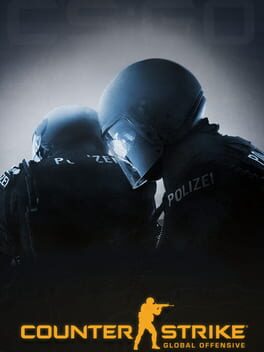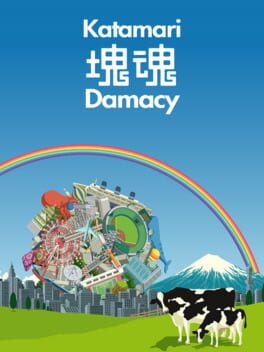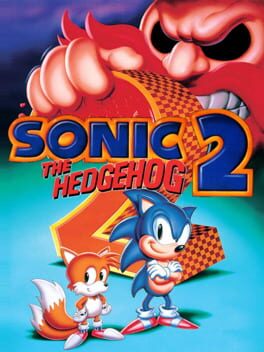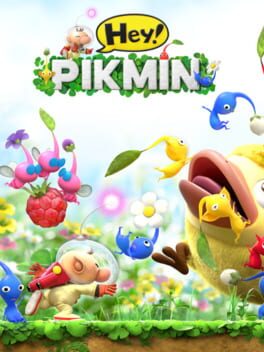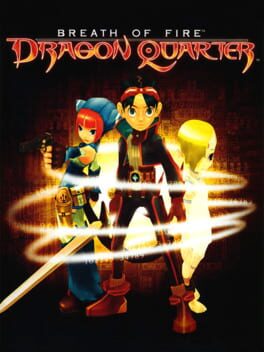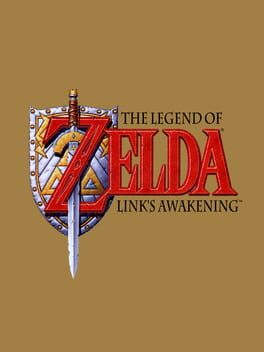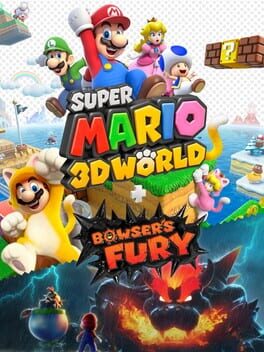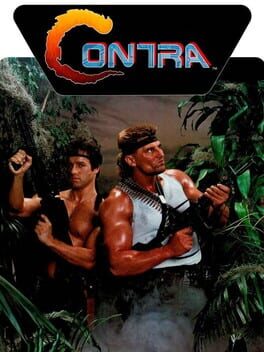thepaloalto
As I pursued my self inflicted torture that was post-graduate education in the United States of America, the comically lengthy reading assignments that were a nightly occurrence completely destroyed any energy that otherwise could have been used to socialize publicly. Thanks to Counter-Strike: Global Offensive, I was able to socialize every evening with angry, maladjusted gamers across the country in the comfort of my pajamas. This game and my teammates certainly didn’t need me, but god did I need them.
2004
Simple ingredients: attractive colors, memorable music, and an irresistible mechanic. Simplicity transformed into a universe that equates to a fun hang out. Docility that thrusts the imagination into the unknown. Get a grip on the task at hand. Allow the novelty of the quirks to wash through you. Only then, may you start to reflect on the underlying message of Katamari Damacy.
Unlike the straightforward presentation of ‘play,’ the ‘narrative’ here is presented indirectly. As a result, Katamari Damacy’s higher purpose is ultimately defined within the mind of the player. Those seeking to define every experience may argue that the game is a criticism of consumerism. As you press to roll up as many things as possible you attempt to--and ultimately fail at--impressing your father. Others may opine that Katamari Damacy serves as a metaphor for our lifecycle. An ashes to ashes, dust to dust message juxtaposed by the comical task of hoarding physical mass to create a celestial form. Disciples under William of Ockham will toss these interpretations aside, and instead appreciate the culmination of a design strategy that chose to focus on a snowball roll mechanic, faced a challenge of making this not feel like a day job, and dislodged some personal interests in an attempt to offer some sense of progression and purpose for the player. By the time the credits have rolled, you may realize that parsing out any philosophical undertone is as sisyphean a task as rolling a katamari to please elders.
As my credits presented themselves, memories surfaced from my highschool freshman year. Waiting at EBX until ‘The Girl Next Door’ was set to begin at the mall theater. I stood there effectively twiddling my thumbs, and reflected still further into the past. Presenting as my even younger self, at that same EBX, observing my best friend trading in his impressive Playstation 1 collection, and with it, years of memories between us. The purpose of that trade was to afford the Xbox, a copy of Halo: Combat Evolved, and a few controllers. The cost was our shared experience.
Conservation at odds with creation.
Again at EBX, awaiting ‘The Girl Next Door,’ chatting up a clerk regarding Halo 2 rumors, another game caught my eye. Near the back of the store, a child enraptured at the PS2 kiosk, the game displayed was Katamari Damacy. Colors that demanded attention. Unfortunately, the sound was off. I thought to myself: what an odd looking game for children. Too occupied with the thought that I was too cool for such endeavors, I let Katamari Damacy pass me by. My life went on, absolutely Katamari-less and sometimes joyless. I did eventually get a chance to check out Halo 2, Halo 3, and beyond; but over fifteen years passed before Katamari Damacy crossed my path again.
I have now completed the game, yet I reflect back on that child at EBX. What joys did Katamari bring him at such a young age, did he end up buying the game, did he even own his own Playstation 2? I dwell on that missed opportunity. I wasted so many of my prime gaming years on first person shooters, was such destiny sealed that afternoon? It’s probably healthier to not dwell on that moment, and just be happy with life as it was served for me. Now in my 30s I was able to enjoy Katamari Damacy with completely fresh eyes. Any ‘opinions’ and ‘preferences’ long developed. I soaked Katamari Damacy in, feeling a joy not often afforded me. Maybe such fleeting joy would have passed me by without note in my younger years, but now it is cherishable.
If able, take in Katamari Damacy when you can, you should be so lucky.
Unlike the straightforward presentation of ‘play,’ the ‘narrative’ here is presented indirectly. As a result, Katamari Damacy’s higher purpose is ultimately defined within the mind of the player. Those seeking to define every experience may argue that the game is a criticism of consumerism. As you press to roll up as many things as possible you attempt to--and ultimately fail at--impressing your father. Others may opine that Katamari Damacy serves as a metaphor for our lifecycle. An ashes to ashes, dust to dust message juxtaposed by the comical task of hoarding physical mass to create a celestial form. Disciples under William of Ockham will toss these interpretations aside, and instead appreciate the culmination of a design strategy that chose to focus on a snowball roll mechanic, faced a challenge of making this not feel like a day job, and dislodged some personal interests in an attempt to offer some sense of progression and purpose for the player. By the time the credits have rolled, you may realize that parsing out any philosophical undertone is as sisyphean a task as rolling a katamari to please elders.
As my credits presented themselves, memories surfaced from my highschool freshman year. Waiting at EBX until ‘The Girl Next Door’ was set to begin at the mall theater. I stood there effectively twiddling my thumbs, and reflected still further into the past. Presenting as my even younger self, at that same EBX, observing my best friend trading in his impressive Playstation 1 collection, and with it, years of memories between us. The purpose of that trade was to afford the Xbox, a copy of Halo: Combat Evolved, and a few controllers. The cost was our shared experience.
Conservation at odds with creation.
Again at EBX, awaiting ‘The Girl Next Door,’ chatting up a clerk regarding Halo 2 rumors, another game caught my eye. Near the back of the store, a child enraptured at the PS2 kiosk, the game displayed was Katamari Damacy. Colors that demanded attention. Unfortunately, the sound was off. I thought to myself: what an odd looking game for children. Too occupied with the thought that I was too cool for such endeavors, I let Katamari Damacy pass me by. My life went on, absolutely Katamari-less and sometimes joyless. I did eventually get a chance to check out Halo 2, Halo 3, and beyond; but over fifteen years passed before Katamari Damacy crossed my path again.
I have now completed the game, yet I reflect back on that child at EBX. What joys did Katamari bring him at such a young age, did he end up buying the game, did he even own his own Playstation 2? I dwell on that missed opportunity. I wasted so many of my prime gaming years on first person shooters, was such destiny sealed that afternoon? It’s probably healthier to not dwell on that moment, and just be happy with life as it was served for me. Now in my 30s I was able to enjoy Katamari Damacy with completely fresh eyes. Any ‘opinions’ and ‘preferences’ long developed. I soaked Katamari Damacy in, feeling a joy not often afforded me. Maybe such fleeting joy would have passed me by without note in my younger years, but now it is cherishable.
If able, take in Katamari Damacy when you can, you should be so lucky.
1992
A doubling down on the ideology on display in the initial Sonic the Hedgehog. Now with refinements based on lessons learned from the original’s shortcomings. Gone are the antithesis zones such as Marble Zone, yet the variety of stages is still placed into the spotlight by simply breaking each zone into two parts instead of the original three-parters. The game is concise and direct, probably the most focused Sonic experience throughout the entire series.
Just as the others in the trilogy, there is an emphasis on the gameplay mechanics and everything else the game offers flows naturally from that point. A joy in the movement of Sonic, further improved by the plaything mechanic of the spin dash. Mashing the charge button to get Sonic to fly across the screen is the game-equivalent of winding up an automaton toy car and watching it zip across your living room floor. An emphasis on the momentum of Sonic, and allowing that movement to influence the subsequent level design is what has largely been missing from Sonic games in the years since Sonic 3 and Knuckles. The music is just icing on this cake. Pull up the Sky Chase Zone music, sit with it for a bit. If that isn’t an enticing tease for you, then you must be Nick Chopper.
Just as the others in the trilogy, there is an emphasis on the gameplay mechanics and everything else the game offers flows naturally from that point. A joy in the movement of Sonic, further improved by the plaything mechanic of the spin dash. Mashing the charge button to get Sonic to fly across the screen is the game-equivalent of winding up an automaton toy car and watching it zip across your living room floor. An emphasis on the momentum of Sonic, and allowing that movement to influence the subsequent level design is what has largely been missing from Sonic games in the years since Sonic 3 and Knuckles. The music is just icing on this cake. Pull up the Sky Chase Zone music, sit with it for a bit. If that isn’t an enticing tease for you, then you must be Nick Chopper.
2017
A bit out of character for me, but I gave up on this game after about five hours. Although I commend Nintendo for trying to branch the Pikmin franchise into a different genre, there really didn't seem to be any unique ideas that Pikmin brought over to platforming. Maybe if I did a little research I could prove the following wrong, but I feel like this game might be Nintendo’s creative floor.
At times, it felt like I was playing a new iteration of Yoshi’s Island, but don’t read that as a compliment, quite the opposite actually. Where Yoshi’s Island gives you a charming and relaxed romp through various worlds, Hey! Pikmin just doubles down on relaxation to the point where the player is at times subdued.
The player is never placed in a situation with any stakes. The largest levels of decision making equate to should I take this detour to get more collectables or should I just keep moving towards the end of the stage. Though there are different Pikmin with different uses, the game limits which Pikmin you have access to, so you are never thinking about any unique applications of the tools at your disposal. All of this could magically change after the point where I stopped, but after five hours of droning onwards without joy it was clear the game wasn’t respecting my time.
If you’re looking for a chance to solve puzzles, apply critical thinking skills, or simply register brain activity on a fMRI; you may want to look elsewhere. If you’re looking for a way to unwind just before bed or a game to autopilot while watching a program, then maybe Hey! Pikmin is right up your alley.
At times, it felt like I was playing a new iteration of Yoshi’s Island, but don’t read that as a compliment, quite the opposite actually. Where Yoshi’s Island gives you a charming and relaxed romp through various worlds, Hey! Pikmin just doubles down on relaxation to the point where the player is at times subdued.
The player is never placed in a situation with any stakes. The largest levels of decision making equate to should I take this detour to get more collectables or should I just keep moving towards the end of the stage. Though there are different Pikmin with different uses, the game limits which Pikmin you have access to, so you are never thinking about any unique applications of the tools at your disposal. All of this could magically change after the point where I stopped, but after five hours of droning onwards without joy it was clear the game wasn’t respecting my time.
If you’re looking for a chance to solve puzzles, apply critical thinking skills, or simply register brain activity on a fMRI; you may want to look elsewhere. If you’re looking for a way to unwind just before bed or a game to autopilot while watching a program, then maybe Hey! Pikmin is right up your alley.
2019
This is Norman Reedus. There are many like him, but this one is mine.
Norman Reedus is my best friend. He is my life. I must master him as I must master my life.
Without me, Norman Reedus is useless. Without Norman Reedus, I am useless. I must navigate Norman Reedus true. I must navigate straighter than my enemy who is trying to catch me. I must navigate past him before he catches me. I will ...
Norman Reedus and I know that what counts in war is not the rounds we fire, the noise of our burst, nor the smoke we make. We know that it is the journey that counts. We will journey...
Norman Reedus is human, even as I, because he is my life. Thus, I will learn him as a brother. I will learn his weaknesses, his strength, his parts, his accessories, his sights and his bb. I will keep Norman Reedus clean and ready, even as I am clean and ready. We will become part of each other. We will ...
Before God, I swear this creed. Norman Reedus and I are the defenders of my country. We are the masters of our enemy. We are the saviors of my life.
So be it, until victory is America's and there is no enemy, but peace!
---
Honestly though, in some ways I think this game and Breath of the Wild are two separate solutions to the same design problem. Both developers recognized the stagnant nature of open world games and sought to change the player’s incentive on a fundamental level. Where Breath of the Wild incentivized exploration in terms of getting from point A to whatever you define as your own point B, Death Stranding incentivized exploration in terms of how you get from point A to point B. The challenge of Death Stranding is the traversal itself, and I completely understand why it receives criticisms of being a walking simulator. It is a walking simulator by design, that is its strength. It’s a beautiful game, not only in that its message to the player could not be more poignant in 2020, but also in how it ‘gameafies’ every last morsel of interaction, from how you converse with individuals, and how you load out your character, to how you choose a path, and how you choose to press on... despite the odds. Leading up to Breath of the Wild, it felt like a lot of games were going open world just because they could. Many complained about the ‘ubisoft-ification’ of the genre. Series like Assassin’s Creed and Red Dead Redemption took the open world genre to its natural conclusion. Death Stranding shows that the genre still has a lot to offer.
Norman Reedus is my best friend. He is my life. I must master him as I must master my life.
Without me, Norman Reedus is useless. Without Norman Reedus, I am useless. I must navigate Norman Reedus true. I must navigate straighter than my enemy who is trying to catch me. I must navigate past him before he catches me. I will ...
Norman Reedus and I know that what counts in war is not the rounds we fire, the noise of our burst, nor the smoke we make. We know that it is the journey that counts. We will journey...
Norman Reedus is human, even as I, because he is my life. Thus, I will learn him as a brother. I will learn his weaknesses, his strength, his parts, his accessories, his sights and his bb. I will keep Norman Reedus clean and ready, even as I am clean and ready. We will become part of each other. We will ...
Before God, I swear this creed. Norman Reedus and I are the defenders of my country. We are the masters of our enemy. We are the saviors of my life.
So be it, until victory is America's and there is no enemy, but peace!
---
Honestly though, in some ways I think this game and Breath of the Wild are two separate solutions to the same design problem. Both developers recognized the stagnant nature of open world games and sought to change the player’s incentive on a fundamental level. Where Breath of the Wild incentivized exploration in terms of getting from point A to whatever you define as your own point B, Death Stranding incentivized exploration in terms of how you get from point A to point B. The challenge of Death Stranding is the traversal itself, and I completely understand why it receives criticisms of being a walking simulator. It is a walking simulator by design, that is its strength. It’s a beautiful game, not only in that its message to the player could not be more poignant in 2020, but also in how it ‘gameafies’ every last morsel of interaction, from how you converse with individuals, and how you load out your character, to how you choose a path, and how you choose to press on... despite the odds. Leading up to Breath of the Wild, it felt like a lot of games were going open world just because they could. Many complained about the ‘ubisoft-ification’ of the genre. Series like Assassin’s Creed and Red Dead Redemption took the open world genre to its natural conclusion. Death Stranding shows that the genre still has a lot to offer.
2012
On paper, 007 Legends sounds like the perfect concept. Using a period of unconsciousness that functioned as a break for title credits in a film, a game's worth of story is presented to the player as though it were 007’s life flashing before his eyes. This simple conceit allows for a game that briefly touches on a handful of standout moments throughout the entire Bond franchise.
As a person that grew up in a home where James Bond was an embarrassingly large portion of our re-playable film rotation, the proposition of ‘The Best of Bond, James Bond’ sounded irresistible to my ears. Looking at the films touched upon, it became apparent that the developers wanted to give each different Bond actor a time to shine with respect to the franchise’s history. My personal favorite Bond film, On Her Majesty’s Secret Service, mostly remembered as ‘the one with that one-time James Bond actor,’ would finally be getting the recognition that had until now escaped it.
Jumping into the game, it quickly became apparent that the novelty of the broad concept was the only redeeming factor. If you don’t come to the game with a prior adoration or nostalgia for these films, there isn’t much to keep you invested.
There are a few things that must be reckoned with. First, the game quickly lets the player know that it has a formula, and it will not be deviating from it. Each film is broken down into a loop that consists of entering the facility, finding the villain’s lair, investigating briefly, getting out of there. The game makes you do this five times, once for each film touched upon, and then it is over. Any sort of variety really feels like window dressing that doesn’t meaningfully distinguish each film from one another. To further detract from any attempt to distinguish these experiences, the game used Daniel Craig’s likeness for each separate era of the series, the same gadgets are available to you throughout each segment, and the weapons stay the same. One caveat to all of this is the final Moonraker segment, which feels like a breath of fresh air at the final moments of the game, but even that stage is ultimately bogged down by the chunky mechanics persistent throughout the entirety of the 007 Legends experience. By the end, it is clear that what was meant to stand as a testament to fifty years of quality entertainment instead operates as a suggestion that maybe you’ve been watching the same movie in different clothes over and over for the past fifty years. If instead, they embraced the differences of these films, whether it be showcasing each era, styles in clothing, different Bond actors, or different weaponry and technology; it may have felt more like a celebration than an obligation.
Okay, so the story is presented poorly, and the levels blend together. Maybe the game-play could still entice someone to press on. Unfortunately, this too falls short of a compelling experience. The game is clearly a product of its time, presenting a James Bond story within what is essentially a Call of Duty clone. This is not necessarily a bad thing on its own. Call of Duty games have earned their reputation for a reason. Great sound work, careful weapon design that focuses on weaponry that feels good to operate, and some levels that break out of the typical first person presentation to allow the game to feel fresh as it progresses. Here, again, the execution in 007 Legends falls flat. The gun-play is not satisfactory, a lot of the enemies feel like bullet sponges, the weapons simply don’t feel good to use. An added perplexity is presented in the weapon modification system, that allows you to buy ‘upgrades’ that fail to distinguish your arsenal from that which you may find abandoned on the ground. The Q-Branch gadgetry also feels unnecessary and is generally unpleasant to interact with. The odd exception is a spy-pen that is somehow more powerful than any of the other weapons throughout the entire game.
Another bit worth noting are the segments that attempt to break the mold, whether it be the vehicle segments, a skiing segment, or the boss encounters. Each serves to underscore the poor execution of concept, and further distances the player from experiencing life as the titular character, a suave intellectual that always emerges unscathed despite the most impossible of circumstances. The clearest example of these failures at work are in the boss encounters. It is clear that the designers were uncertain how to present a ‘boss’ in a satisfying way. Each of the boss fights are presented through a QTE-esque fist fight that follows the same progression. Through matching your joystick placement with the one displayed on screen, James Bond engages in a fist fight with each villain. After a few punches are exchanged, the villain will appear to be losing. The villain will then pick up a blunt object. Through your matching exercise, James Bond will disarm the villain, and then continue to punch them until their health bar is depleted. This same boss encounter is consistent throughout each level and is only distinguishable by the character you are looking at as you complete the matching exercise.
In the end, as a fan I must say I was very disappointed in this game. Now that I’m done with the experience, I can only help but wonder how this game would hold up for someone with no prior attachment. Without any interest in references to the films, I can’t see a person lasting beyond a level or two. Even as a die-hard, I can’t help but feel I wasted my time. Now as I’m sitting here writing this, I’m also realizing that the game fails to revisit the opening concept: James Bond, unconscious, reliving these memories. Instead of suggesting that something was learned as he comes out of his unconscious state, the game simply ends and we never even learn if he awakens again. This lack of consideration for even the most basic of narrative considerations speaks to the inattention on display throughout 007 Legends.
As I reflect on James Bond as a character, and consider the characteristics that have lead to his status as a cultural icon. I realize that the James Bond contained within 007 Legends fails to capture almost any of the appealing aspects of one of the longest running film franchises of all time. It's honestly impressive.
As a person that grew up in a home where James Bond was an embarrassingly large portion of our re-playable film rotation, the proposition of ‘The Best of Bond, James Bond’ sounded irresistible to my ears. Looking at the films touched upon, it became apparent that the developers wanted to give each different Bond actor a time to shine with respect to the franchise’s history. My personal favorite Bond film, On Her Majesty’s Secret Service, mostly remembered as ‘the one with that one-time James Bond actor,’ would finally be getting the recognition that had until now escaped it.
Jumping into the game, it quickly became apparent that the novelty of the broad concept was the only redeeming factor. If you don’t come to the game with a prior adoration or nostalgia for these films, there isn’t much to keep you invested.
There are a few things that must be reckoned with. First, the game quickly lets the player know that it has a formula, and it will not be deviating from it. Each film is broken down into a loop that consists of entering the facility, finding the villain’s lair, investigating briefly, getting out of there. The game makes you do this five times, once for each film touched upon, and then it is over. Any sort of variety really feels like window dressing that doesn’t meaningfully distinguish each film from one another. To further detract from any attempt to distinguish these experiences, the game used Daniel Craig’s likeness for each separate era of the series, the same gadgets are available to you throughout each segment, and the weapons stay the same. One caveat to all of this is the final Moonraker segment, which feels like a breath of fresh air at the final moments of the game, but even that stage is ultimately bogged down by the chunky mechanics persistent throughout the entirety of the 007 Legends experience. By the end, it is clear that what was meant to stand as a testament to fifty years of quality entertainment instead operates as a suggestion that maybe you’ve been watching the same movie in different clothes over and over for the past fifty years. If instead, they embraced the differences of these films, whether it be showcasing each era, styles in clothing, different Bond actors, or different weaponry and technology; it may have felt more like a celebration than an obligation.
Okay, so the story is presented poorly, and the levels blend together. Maybe the game-play could still entice someone to press on. Unfortunately, this too falls short of a compelling experience. The game is clearly a product of its time, presenting a James Bond story within what is essentially a Call of Duty clone. This is not necessarily a bad thing on its own. Call of Duty games have earned their reputation for a reason. Great sound work, careful weapon design that focuses on weaponry that feels good to operate, and some levels that break out of the typical first person presentation to allow the game to feel fresh as it progresses. Here, again, the execution in 007 Legends falls flat. The gun-play is not satisfactory, a lot of the enemies feel like bullet sponges, the weapons simply don’t feel good to use. An added perplexity is presented in the weapon modification system, that allows you to buy ‘upgrades’ that fail to distinguish your arsenal from that which you may find abandoned on the ground. The Q-Branch gadgetry also feels unnecessary and is generally unpleasant to interact with. The odd exception is a spy-pen that is somehow more powerful than any of the other weapons throughout the entire game.
Another bit worth noting are the segments that attempt to break the mold, whether it be the vehicle segments, a skiing segment, or the boss encounters. Each serves to underscore the poor execution of concept, and further distances the player from experiencing life as the titular character, a suave intellectual that always emerges unscathed despite the most impossible of circumstances. The clearest example of these failures at work are in the boss encounters. It is clear that the designers were uncertain how to present a ‘boss’ in a satisfying way. Each of the boss fights are presented through a QTE-esque fist fight that follows the same progression. Through matching your joystick placement with the one displayed on screen, James Bond engages in a fist fight with each villain. After a few punches are exchanged, the villain will appear to be losing. The villain will then pick up a blunt object. Through your matching exercise, James Bond will disarm the villain, and then continue to punch them until their health bar is depleted. This same boss encounter is consistent throughout each level and is only distinguishable by the character you are looking at as you complete the matching exercise.
In the end, as a fan I must say I was very disappointed in this game. Now that I’m done with the experience, I can only help but wonder how this game would hold up for someone with no prior attachment. Without any interest in references to the films, I can’t see a person lasting beyond a level or two. Even as a die-hard, I can’t help but feel I wasted my time. Now as I’m sitting here writing this, I’m also realizing that the game fails to revisit the opening concept: James Bond, unconscious, reliving these memories. Instead of suggesting that something was learned as he comes out of his unconscious state, the game simply ends and we never even learn if he awakens again. This lack of consideration for even the most basic of narrative considerations speaks to the inattention on display throughout 007 Legends.
As I reflect on James Bond as a character, and consider the characteristics that have lead to his status as a cultural icon. I realize that the James Bond contained within 007 Legends fails to capture almost any of the appealing aspects of one of the longest running film franchises of all time. It's honestly impressive.
1988
This is a Super Nintendo game that was somehow compressed to work on the Nintendo Entertainment System. The graphics feel next-gen, the design was innovative, and it ultimately defined the Nintendo charm that the company still relies upon today. Truly, the pinnacle of two dimensional platforming. Play the original Super Mario Brothers for fifteen minutes, then put this game on and just sit with that experience for a while. Think about how much the developers were able to pull from that original concept and perfect it. Think about how every Mario game since 1988 seeks to recreate this experience. Think about how many non-Mario games also took influence from this title. Oh yeah, I guess it is pretty fun too.
1990
A refinement of the game-play proposal of Super Mario Bros. 3, with a growth in its scope. I believe that this was probably the title that tied the fate of this series with the fate of Nintendo as a whole. There may have been a world where the transition to the Super Nintendo failed to recapture the hearts of many, and the Mario series could have gone the way of F-Zero. As it’s first big series, such a misstep could have drastically changed Nintendo’s approach entirely. Although many hold this as the best Mario game, I don’t think it pushes the envelope as far as it’s prior iteration did. At the same time, it is the definitive Mario experience. The biggest leap here is its sound design. The music and other accompaniments felt like the biggest ‘next gen’ aspect of this entry. I suppose the introduction of the Yoshi game-play mechanic was probably also revolutionary at the time.
I suppose I'll start with the negative, the game at times suffers from linearity. Especially for a title that expects you to occasionally turn in your badge and gun to start effectively from scratch at the beginning of the line. Also, although befitting the overall story of the game, the art style is fairly dark and feels like you're fumbling your way through a poorly lit warehouse for the majority of your 20+ hour excursion.
Those shortcomings can be forgiven as the package as a whole remains fairly compelling. The story is simple, you are a grunt in a force tasked with maintaining the status quo. You and a partner take on a transport mission that goes awry. From that mistake, you learn that the system you've been fighting for is actually not what it had seemed to be. Because of this you realign your goals with a rogue revolutionary as she tries to liberate a humanoid science experiment against all odds.
This story is wrapped in a handful of interesting play mechanics, an odd save system that allows you to carry stats through restarts, an battle system that lacks random encounters and instead lets you bait and trap opponents before encountering them, and the dragon counter.
The dragon counter is simple enough on paper. Each time you use a special ability (i.e. overpowered), the counter goes up. If the counter fills, your game ends. As that counter sits with you constantly on the screen through your entire play-through it becomes a silent omnipresent entity that ultimately will define your entire experience. For myself--a player that is overly cautious with the tools at my disposal--it was a badge of pride to keep it low at all costs, yet later the d-counter became a source of embarrassment as I had to lean on those powers with more occasion.
The game is filled with plenty of these small little intricacies that feel unique to the title even almost 20 years after its release. If you're an RPG fan it would be hard to not recommend this as a must play if only to explore the boundary pushing that was on display here.
Those shortcomings can be forgiven as the package as a whole remains fairly compelling. The story is simple, you are a grunt in a force tasked with maintaining the status quo. You and a partner take on a transport mission that goes awry. From that mistake, you learn that the system you've been fighting for is actually not what it had seemed to be. Because of this you realign your goals with a rogue revolutionary as she tries to liberate a humanoid science experiment against all odds.
This story is wrapped in a handful of interesting play mechanics, an odd save system that allows you to carry stats through restarts, an battle system that lacks random encounters and instead lets you bait and trap opponents before encountering them, and the dragon counter.
The dragon counter is simple enough on paper. Each time you use a special ability (i.e. overpowered), the counter goes up. If the counter fills, your game ends. As that counter sits with you constantly on the screen through your entire play-through it becomes a silent omnipresent entity that ultimately will define your entire experience. For myself--a player that is overly cautious with the tools at my disposal--it was a badge of pride to keep it low at all costs, yet later the d-counter became a source of embarrassment as I had to lean on those powers with more occasion.
The game is filled with plenty of these small little intricacies that feel unique to the title even almost 20 years after its release. If you're an RPG fan it would be hard to not recommend this as a must play if only to explore the boundary pushing that was on display here.
In 2020, knowing that games like Breath of the Wild and Witcher 3 can be taken with you may minimize what was accomplished with Link’s Awakening, but packing a full Legend of Zelda experience in a ‘to-go’ package was quite the feat back in 1993. Anything beyond that was just frosting on the hypothetical game cake. Without spoiling the game, how it plays with the end game ‘twist’ is just that extra level of Nintendo care that many have now come to expect.
An odd title to review, in part because two very different titles have been packaged together. Super Mario 3D World, a remaster, retains all that made the original one of the few ‘must-own’ titles in the Wii-U era.
Not satisfied with simply making that same game available to a new audience, Nintendo issued a handful of small tweaks that actually improve upon the 3D World as presented in 2013. Most notably, the speed of the game has increased. It is almost unnoticeable unless you have the two releases side-by-side, but it makes a large difference in how the player perceives the challenges that face them. The Wii-U version was a bit of a ‘hang-out’ game for single players, with each additional player more chaos was introduced. The 2013 version thrived on the chaos it could produce, but still provided a traditional Mario experience complete with masterclass level design for those that were willing to take on the game alone. With the slight speed tweak, some of that chaos--perhaps lost on some 2013 players--is now available to people playing by their lonesome. An impact of this, is that the multiplayer now feels like the secondary experience instead of the primary one. Regardless, either way you slice it, 2021 or 2013, Super Mario 3D World is a must for platforming fans. The game harkens back to some of Mario’s greatest moments, to me Super Mario Bros. 3, and continues to mix-up its mechanics in a satisfying manner as the game progresses.
Moving to the more interesting addition here, it is fair to say Bowser’s Fury is overrated. That is not to say it isn’t yet another essential Mario title, it absolutely is. Yet, the discourse around the game has been overwhelmingly positive, where I fear some will be met with a tinge of disappointment expecting this to be ‘the’ premier Mario title.
Let’s talk about those negatives. The game is fairly short. I’m not one to criticize length alone, but coupled with some faint feelings of repetitiveness, the length is worth spending some time on. The game can be beat in two or three sittings, and during that time you will encounter a similar Bowser encounter around seven to ten times. Further, as is typical in Mario games, there are plenty of ‘collect them all’ challenges sprinkled throughout the game. In longer Mario entries, the collection segments allow the game to showcase some of the finer details each level, but here, where the experience never takes a real moment to breathe, moments where the game chooses to not-iterate begin to feel like unnecessary padding. Finally, the movement is clearly adapted from a non-full range 3D title, and you feel that at times. Sometimes the camera doesn’t keep up with your pace, at other times you miss a triple jump or other fluid movements that other Mario games are so well known for. Again, these are all minor negatives, that fail to hold this back from being an essential Mario entry.
The biggest positives have been stated better elsewhere, but in sum, the game is frictionless. Never before have you felt so free to move where you want, and how you want, through the entire space of the game. The reverence towards the game is largely well earned, and this ability to capture the concept of an open-world platformer so well is a main reason for it. The game is essentially bottled joy: gameplay, level design, music; all in harmony with one another. For the most part, the game continues to innovate and push itself forward through its final act.
Maybe Bowser’s Fury is the Charles Barkley of the Mario series: a model of perfection, but for a flawed tendency to hoist up bricks from beyond the arc. At the end of the day, Bowser’s Fury is high tier Mario, but it still has it’s minor quirks.
Not satisfied with simply making that same game available to a new audience, Nintendo issued a handful of small tweaks that actually improve upon the 3D World as presented in 2013. Most notably, the speed of the game has increased. It is almost unnoticeable unless you have the two releases side-by-side, but it makes a large difference in how the player perceives the challenges that face them. The Wii-U version was a bit of a ‘hang-out’ game for single players, with each additional player more chaos was introduced. The 2013 version thrived on the chaos it could produce, but still provided a traditional Mario experience complete with masterclass level design for those that were willing to take on the game alone. With the slight speed tweak, some of that chaos--perhaps lost on some 2013 players--is now available to people playing by their lonesome. An impact of this, is that the multiplayer now feels like the secondary experience instead of the primary one. Regardless, either way you slice it, 2021 or 2013, Super Mario 3D World is a must for platforming fans. The game harkens back to some of Mario’s greatest moments, to me Super Mario Bros. 3, and continues to mix-up its mechanics in a satisfying manner as the game progresses.
Moving to the more interesting addition here, it is fair to say Bowser’s Fury is overrated. That is not to say it isn’t yet another essential Mario title, it absolutely is. Yet, the discourse around the game has been overwhelmingly positive, where I fear some will be met with a tinge of disappointment expecting this to be ‘the’ premier Mario title.
Let’s talk about those negatives. The game is fairly short. I’m not one to criticize length alone, but coupled with some faint feelings of repetitiveness, the length is worth spending some time on. The game can be beat in two or three sittings, and during that time you will encounter a similar Bowser encounter around seven to ten times. Further, as is typical in Mario games, there are plenty of ‘collect them all’ challenges sprinkled throughout the game. In longer Mario entries, the collection segments allow the game to showcase some of the finer details each level, but here, where the experience never takes a real moment to breathe, moments where the game chooses to not-iterate begin to feel like unnecessary padding. Finally, the movement is clearly adapted from a non-full range 3D title, and you feel that at times. Sometimes the camera doesn’t keep up with your pace, at other times you miss a triple jump or other fluid movements that other Mario games are so well known for. Again, these are all minor negatives, that fail to hold this back from being an essential Mario entry.
The biggest positives have been stated better elsewhere, but in sum, the game is frictionless. Never before have you felt so free to move where you want, and how you want, through the entire space of the game. The reverence towards the game is largely well earned, and this ability to capture the concept of an open-world platformer so well is a main reason for it. The game is essentially bottled joy: gameplay, level design, music; all in harmony with one another. For the most part, the game continues to innovate and push itself forward through its final act.
Maybe Bowser’s Fury is the Charles Barkley of the Mario series: a model of perfection, but for a flawed tendency to hoist up bricks from beyond the arc. At the end of the day, Bowser’s Fury is high tier Mario, but it still has it’s minor quirks.
1987
Everyone knows Nintendo Entertainment System games had a tendency to be overly difficult due to their recent ancestry with arcade cabinet design, and Contra is the best example of the difficulty curve somehow strengthening the appeal of a title. Even a play-through that takes advantage of the now famous Konami code, leaves the player wondering, what if? What if I played the game without the extra lives, what if I didn’t have the continues, what if I was actually feeding quarters into a machine for each mistake? The intensity of the bullet hell that is Contra shines through, and is a compelling play even today.
I remember seeing this game at Target when I was twelve and having no idea what it was. I just knew that it looked like James Bond: The Video Game based on the box, and as a fan of the films and games I had to have it. If you had asked me that day what my favorite game of all time was I might have said something like ATV Off Road Fury. MGS2 showed me all sorts of wacky shit in the best way possible. Revolver Ocelot seemed extremely bad-ass to me at the time, and characters like Fatman had just the right amount of childish humor to keep me engaged even if the larger strokes of the game were likely going over my head. I was an idiot then--I am an idiot now--but even this idiot can appreciate that Sons of Liberty is an all-timer.
2001
The escort mission, a chinese finger trap for developers. Where games before it would only briefly utilize the escort to limited success, Ico lives, breathes, and thrives by the strength of this mechanic. Heavy theatrics, screenplay-like writing, and complex puzzling be damned. Instead, Ico wallows in the escort mission and any meaning of the game is derived from the relationship forced upon the player through this system. Many games since take clear inspiration from this title, and Naughty Dog hot off of Crash Team Racing may have learned a thing or two playing Ico.
1994
It’s unfortunate that I never got around to playing this until the release of the Super NES: Classic Edition in 2017. Even at that late date, the confidence in the design of the game was oddly refreshing. As you progress through the map, it continues to not only develop what your character is capable of, but also how traversal of the map takes place. It lends the feeling of a big open world to explore while implicitly guiding you through the map without the sense of linearity or incapacitation. It’s influence on Castlevania resulted in a new genre that I instinctively avoid despite my enjoyment of every game I’ve played within that definition.
